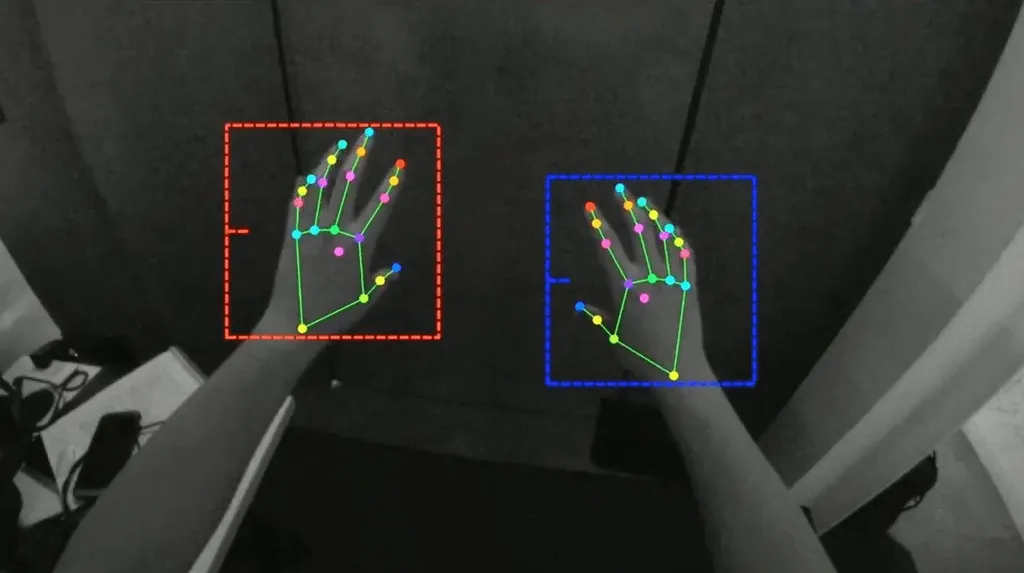Developers are beginning to roll out major hand tracking improvements to their Quest apps as v39 from Meta enables Hand Tracking 2.0. The first apps with the improved feature include Cubism and Unplugged: Air Guitar, with Hand Physics Lab releasing the feature as a beta update that’s likely to roll out more broadly this week.
Quest 2’s new Hand Tracking 2.0 mode brings some dramatic improvements to using your hands without controllers. Meta says its researchers and engineers “developed a new method of applying deep learning to better understand hand poses when the device’s cameras can’t see the full hand or when the hand is moving quickly”, describing the result as “a step-function improvement in tracking continuity”.
The new mode can apparently handle your hands moving quickly, one hand covering the other, and even your hands touching – scenarios which previously caused the tracking to temporarily break. This should make Hand Tracking much more practical to use, and enable new actions like clapping and counting on fingers.
For now Hand Tracking 2.0 is an optional developer side upgrade, so you’ll need to wait for apps to release updates to support it to see any of these improvements. However, later this year Hand Tracking 2.0 will become the default.
The new mode supersedes the High Frequency Hand Tracking mode released last year. That mode was also a developer choice and also improved fast hand movements – as well as reducing latency – but it came with the tradeoff of slightly increased hand jitter and capping the maximum CPU and GPU clock speed available to apps. Meta claims Hand Tracking 2.0 delivers the fast movement benefit of High Frequency and more, but runs at the default frequency so doesn’t have the tradeoffs.
Here’s what the developers who had early access to Hand Tracking 2.0 say, via Meta:
“Previously, Cubism’s hand tracking relied on smoothing the hand data input to produce a stable input method. Furthermore, players needed to be taught not to cross their hands since this negatively affected tracking. This is all improved with the latest hand tracking – which is consistent enough for me to turn off hand smoothing by default.” – Cubism developer Thomas Van Bouwel
“This update to hand tracking is a big step forward for natural and intuitive interactions with hands. With this big improvement, we hope more people will discover what hand tracking has to offer to immersive experiences.” – Hand Physics Lab
“Even though we managed to achieve very solid and accurate gameplay using the older version of hand tracking, we had to put some limitations on our gameplay. This needed to be done in order to provide a smooth experience that’s not interrupted by any issues that such a new technology might has from time to time. With the latest update, hand tracking is so accurate and responsive that we could include all the perks we couldn’t before: fast changes of finger positions, plus an increased – and more realistic number of notes that makes the songs feel way more authentic.” – Unplugged: Air Guitar
“Our workouts require a lot of quick punches to be thrown, and it’s imperative for hand-tracking to keep up with the rigorous pace. We’re really happy with this latest update and excited about the overall direction hand-tracking is headed on the Quest platform.” – Liteboxer
This article was originally published April 19 but the publish date was changed on May 2 with the addition of a new first paragraph to note the first apps getting this update.




























